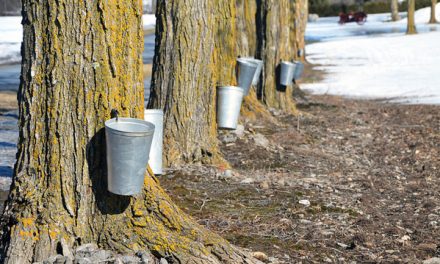Vogel Photo
STORMONT-DUNDAS & GLENGARRY – The spring and summer months are peak tick season in Canada, and after the relatively mild winter we had the ticks are out there and they’re biting. Public Health Units around the province are warning residents about the risk of tick bites and the threat they pose to both people and pets. Lyme disease is spread through the bite of an infected blacklegged tick.
Here are some helpful resources that will provide information on tick identification, habitat and removal, the symptoms and dangers of Lyme disease, and how to protect yourself and minimize the risk of being bitten.
First and foremost, reduce the risk of tick bites by using bug spray and always wearing protective clothing such as long pants, socks and closed-toe footwear when entering tick habitat.
Blacklegged (deer) Ticks are the only ticks that can potentially carry Lyme disease. These should not be confused with Dog Ticks. Help with identifying ticks can be found online at CanLyme and Health Canada.
Tick habitat has expanded dramatically over the last decade. In the past, blacklegged tick habitat in Southern Ontario was restricted to relatively isolated pockets along the shores of the Great Lakes. However, Public Health Ontario’s Blacklegged Tick Established Risk Areas Map for 2024 shows the areas that blacklegged ticks are now regularly found has considerably increased.
Blacklegged ticks seek a host by climbing on vegetation such as grasses or shrubs in the woods (especially along trails) as well as the fringe area between the woods and border. Ticks will wait for a host to rub against them and climb onto the host’s body, eventually attempting to attach and feed.
Tick bites are generally painless, so a visual check of the skin is necessary. A tick bite can happen anywhere, but it is particularly important to check for ticks if you have been walking or working in potential tick habitat or in areas of higher tick populations as promptly removing ticks can help prevent infection.
Don’t forget to take care of your family pet this summer as well. Do a careful inspection when returning from time outside, but the best way to avoid problems is to talk with your veterinarian about the various medications that are available. Often, they combine protection for ticks, fleas and mosquitos into a chewable form.
The best prevention is to avoid tick bites by using insect repellent, wearing proper clothing, removing ticks as soon as possible after bites and removing tick habitats from around the home.
If you (or someone you know) have been bitten by a tick, it is very important to remove it carefully to reduce the chances of transferring Lyme disease.
Once you have the tick removed, you can submit a photo of it to help in identifying it.
Etick.ca has several great resources to help if you have experienced a tick bite.
Some, but not all Public Health Units are receiving ticks for identification and testing, some are not. Check with your local Public Health Unit to see if they are accepting ticks for identification.
Be aware that those various “home remedies” you may have heard for tick removal have not been proven effective and can potentially do more harm than good. Please be advised that under no circumstances should a flame, ointment, flammable liquid (gasoline, oil, lighter fluid, acetone, nail polish, etc.) or caustic material be used in removal attempts. Seek the attention of a doctor to remove the tick or refer to the material online to find out how to properly remove a tick at home.
Generally, a tick must have been attached for 24 hours or more to transmit Lyme disease; however, it is important to monitor for symptoms even if you have removed a tick that you are confident has been on you for less than 24 hours.
Signs and symptoms of Lyme disease can vary from person to person after being bitten, but early symptoms may include fever, headache, muscle and joint pain, fatigue and an expanding red rash (often bullseye shaped with a dark red centre with a ring around it).
On July 1, 2023, Ontario’s Ministry of Health made the tick-borne diseases Anaplasmosis, Babesiosis, and Powassan Virus reportable as Diseases of Public Health Significance (DOPHS) that must be reported within one working day following diagnosis. These tick-borne diseases are relatively new in Ontario and present new challenges for diagnosis and treatment by physicians, and effective response from regional public health units.
Helpful tips, resources and information from the Ontario Ministry of Health on Lyme Disease on how to avoid bites from blacklegged ticks: www.ontario.ca/page/lyme-disease.
Resources and information from Public Health Ontario: www.publichealthontario.ca/en/Diseases-and-Conditions/Infectious-Diseases/Vector-Borne-Zoonotic-Diseases/Lyme-disease.
Lyme Ontario has an excellent fact sheet of information on tick identification, avoidance and removal, as well as the symptoms and testing for Lyme disease: lymeontario.com/about-lyme-disease.
Ticks are not a reason to avoid visiting Ontario’s natural wonders this summer. With a little bit of preparation and some careful observation you can avoid being the black legged tick’s next meal and enjoy the outdoors during the summer of 2024.












